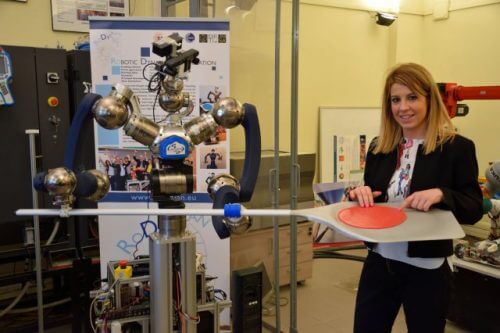A new generation of skilled machines can show off in the kitchen

Pizza has an illustrious history of feeding laboratory toilers late at night, and scientists in Naples, the Italian city famous for its triangles, have easy access to some of the tastiest pizzas in the world. But what interests the engineer Bruno Siciliano is not only that first bite but more than that the preparation of the food.
"Making a pizza involves an unusual degree of dexterity and skill," says Siciliano, who heads the robotics research group at the Federico II University in Naples. To roll a flexible bone like a lump of dough you need a precise and gentle touch. It's one of the only things that humans can do, while robots can't - for now.
Siciliano's team has developed a robot flexible enough to make pizza. It is about kneading the dough, chilling it, adding the ingredients and finally putting the product in the oven. The RoDyMan robot (short for Robotic Dynamic Manipulation) is a five-year project supported by a €2.5 million grant from the European Research Council. Like a human chef, RoDyMan must toss the dough in the air to stretch it, follow it as it spins, and predict the final shape it will take. The debut of the robot will be in May 2018 at the legendary pizza festival of Naples.
This spring, RoDyMan reached a milestone in his progress: stretching the dough without tearing it. To guide the robot, Siciliano's team recruited pizza master Enzo Cuccia and dressed him in a suit of motion sensors. "We study the movements [of Kocha], and imitate them with RoDyMan," says Siciliano.
It's a very logical strategy, says robotics researcher Nicholas Correll of the University of Colorado at Boulder. He developed a model for flexible motion with rubber springs, but was not involved in Siciliano's research. "A person learning to make pizza is helped by feedback from his hands," he adds. "You just take the dough and start pulling and try to feel it."
RoDyMan's head is equipped with vision sensors that track the dough during operation. Based on software, he knows how to train himself to handle pizza like a human chef - a challenging task because it is difficult to control and unorganized. The robot maps the location of the dough and tracks its movement. Through training, the robot improves - similar to how humans develop "muscle memory". The researchers hope that RoDyMan's technology can lead to a new generation of robots that will perform tasks accurately, meticulously and flexibly, or more humanely.
Still, Siciliano admits that nothing compares to the traditional chef. "I don't eat pizza made by a robot," he says, "it won't have the taste that a real pizzaiolo would give it with his soul."
See more on the subject on the science website:
